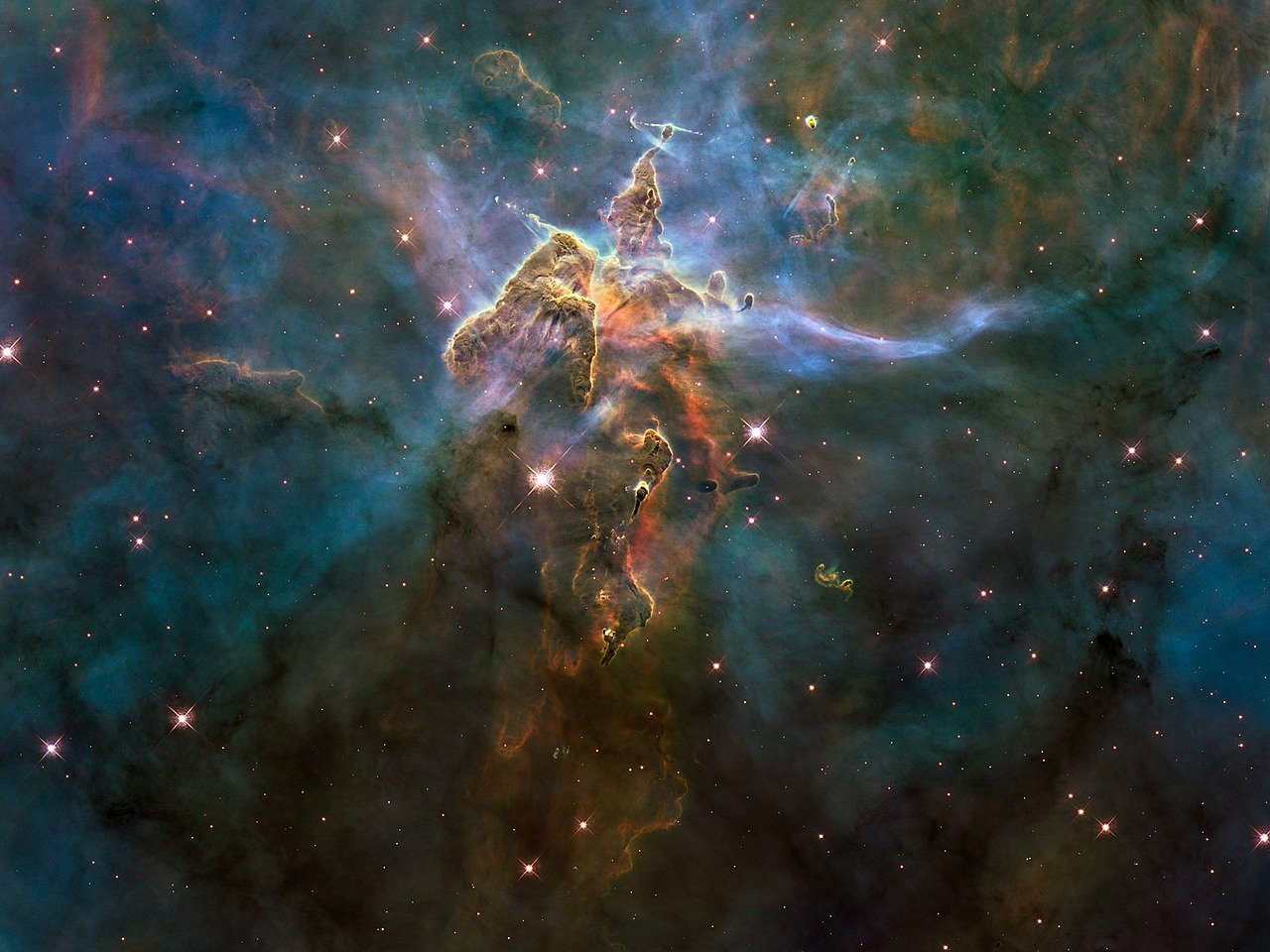
Hey guys,
I would like to present to you a common but interesting misconception concerning inflating universes and cosmic expansion. Namely the false notion that stellar objects in an expanding universe are "drifting" or "flying" away from the Milky Way when in reality they only appear to move away because the geometry of spacetime changes a a cosmological level.
Is it important to note that the universe does not expand into a pre-existing vacuum or nothingness because there is no conceivable notion of existence outside of spacetime. Rather our spacetime itself is evolving with cosmic time.
Let's start with a short phenomelogical introduction. It was in the beginning of the last century that US astronomer Edwin Hubble discovered a strange correlation. By measuring redshifts of galaxies and computing their apparent velocities relative to the Earth he observed that the far objects were all moving away from us with a speed proportional to the measured distance. This became known as Hubble's Law but raised several questions, in particular:
Why are all of them moving away?
We have no evidence for the Earth to be in some distinguished "centre" of universe from which everyone is moving away for some reason. (Even if there was such an "origin point" of the universe, why should Earth happen be close to this spot? It would be an unconceivably huge coincidence.)
Yet a homogeneus and isotropic universe, shouldn't the relative velocities be essentially equally distributed in all directions and independent of distance? Yes they should and in fact the galaxies proper velocities are. But there is a second component contributing to the apparent velocity in our measurement namely a time evolution of our spacetime metric.

From Albert Einstein's equations of general relativity applied to a homogeneous and isotropic universe Russian physicist Alexander Friedmann derived 2 equations describing the evolution of spacetime on a large scale. They imply that our notion of distance in space is not a constant one, i.e. the metric (think of a scale) measuring the distance of two coordinate points is time dependent in itself.
Even when there is no movement at all, the proper distance between two points may in- or decrease due to an in- or deflation of the universe.
This term is proportional to the current distance and in fact the dominant contribution the apparent velocities or very far away galaxies and therefore gives rise to Hubble's Law.
But how to conveice this notion intuitively? Let's consider an thought experiment illustrating (curved) spacetime:
Imagine an inflated balloon in 3 dimensions and assume you are an ant crawling on its surface. Being restricted to this surface, your physical reality is basically a 2 dimensional one, the distance between points is the one you have to run on the balloon. As an ant, this is your universe.
Take two spatial coordinate points, for instance imagine a human drew 2 dots on the balloon. The same human now proceeds to inflate the balloon further. Clearly those dots do not move relative to the surface but their proper distance changed because the balloon's radius in 3D increased.
Beeing the ant standing on one of the dots you would notice the other dot increasing it's distance to you without any movement involvent. In fact by the ballon's inflation, your metric of spacetime has changed.
Whether there is in- or deflation according to the Friedmann equations depends on several parameters such as curvature, cosmological constant, mass-energy density of the universe. From an eventual recollapse to aggregations of de-facto infinite energy to a catastrophic inflation singularity in finite time which would rip apart any matter in the universe our cosmological models take into account several possible outcomes.
By the way, most cosmologists currently believe that our universe falls into the category of slow inflation for infinite time. However the ultimate fate of the universe seems to be very conditional on the nature of Dark Matter/Energy which we have yet to understand much better to make accurate predictions.
Thanks for your interest and have a nice day!
P.S.: Now you might be asking, why are we measuring so much red shift in Hubble's law when the far galaxies are in fact not moving so much? Well cosmic expansion also causes red shift to the distant light that was busy propagating to us for billions of years, so the spectral measurement does not correspond to the proper velocities but is consistent with the apparent ones.
Sources:
Viatcheslav Mukhanov. Physical Foundations of Cosmology. (Cambridge University Press)
https://en.wikipedia.org/wiki/Friedmann_equations
https://en.wikipedia.org/wiki/Hubble%27s_law
https://en.wikipedia.org/wiki/Metric_expansion_of_space
https://en.wikipedia.org/wiki/Redshift
Image Sources:
https://pixabay.com/photo-11173/ by WikiImages
Alexander Friedmann (Wikimedia Commons)
